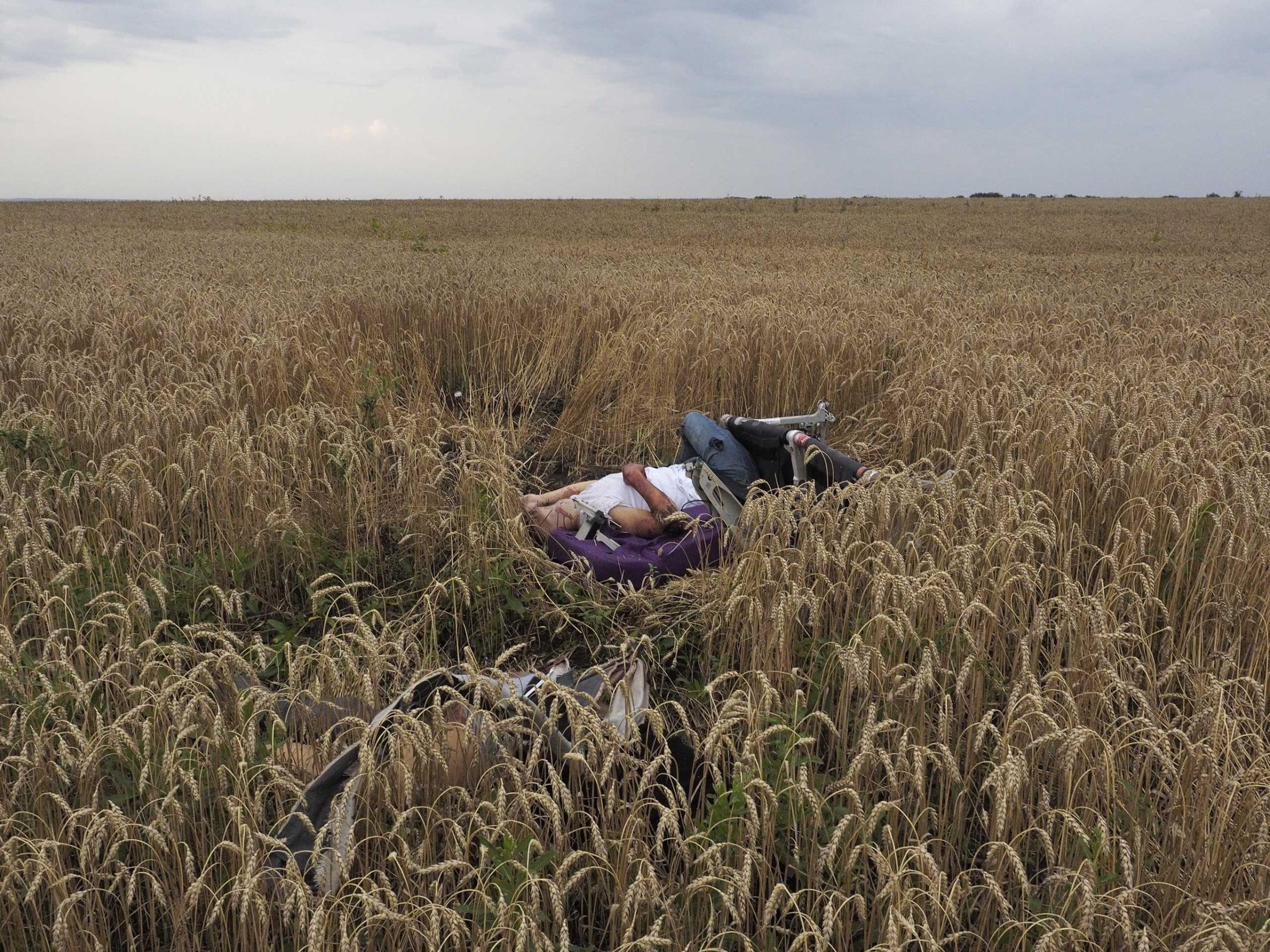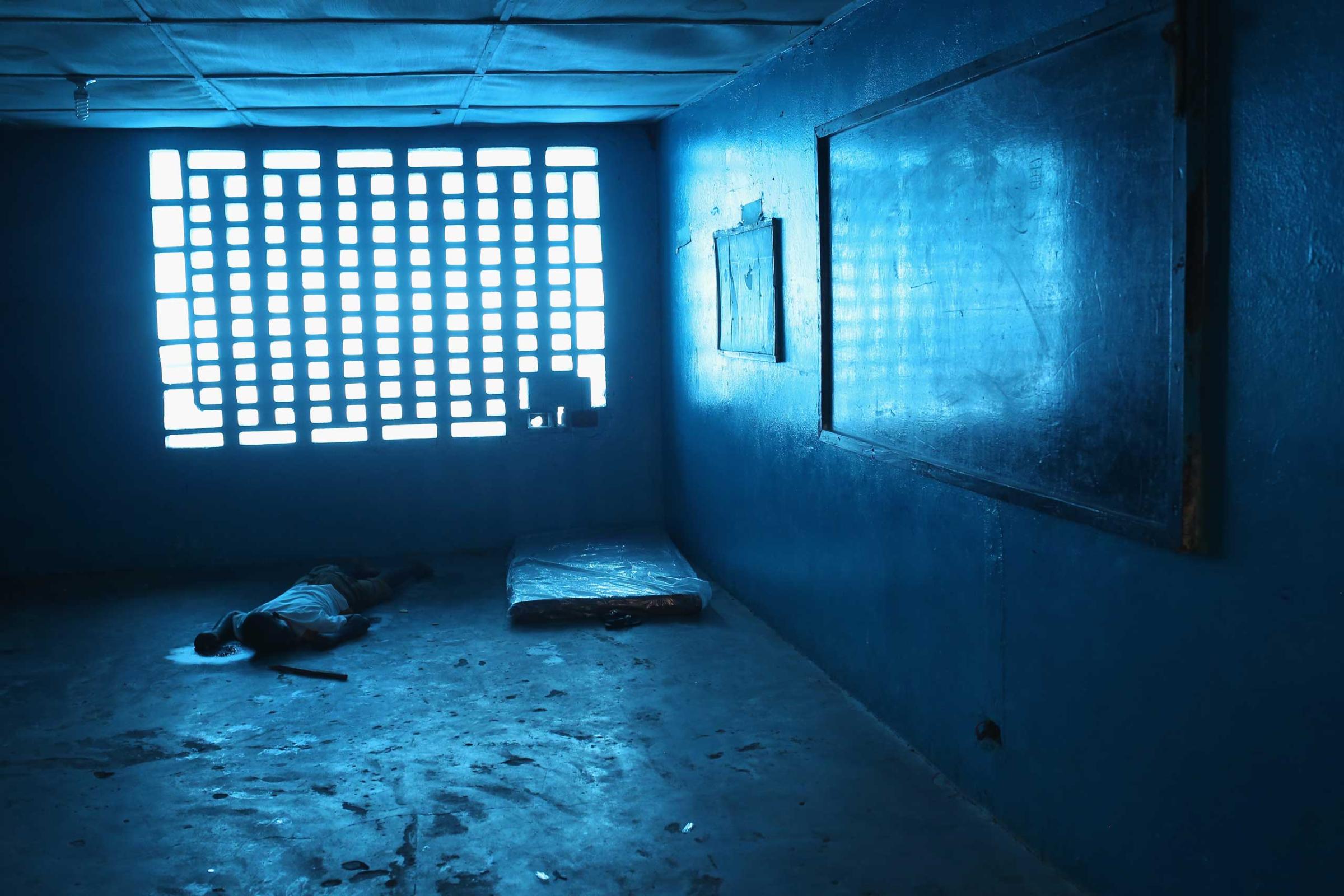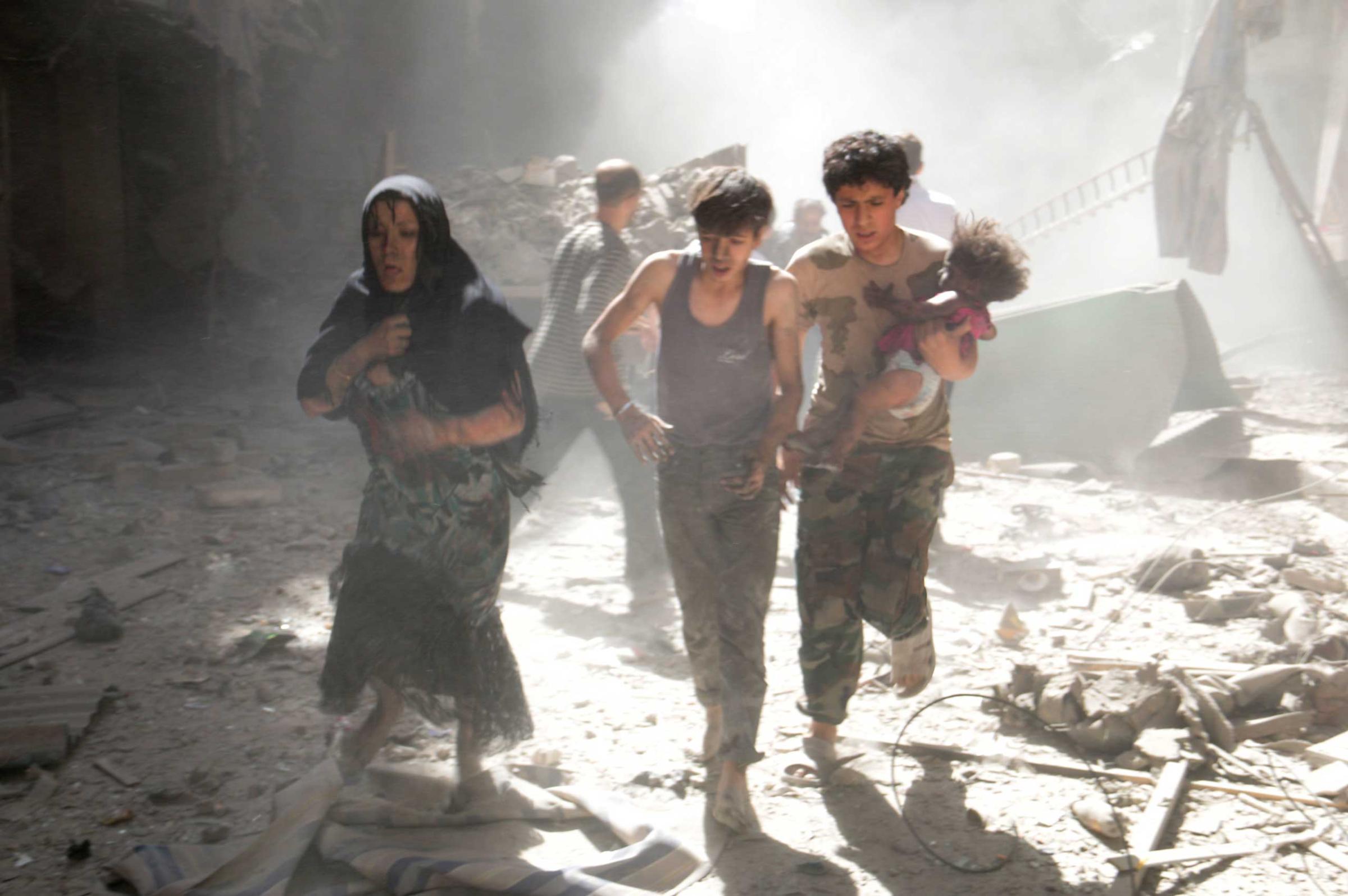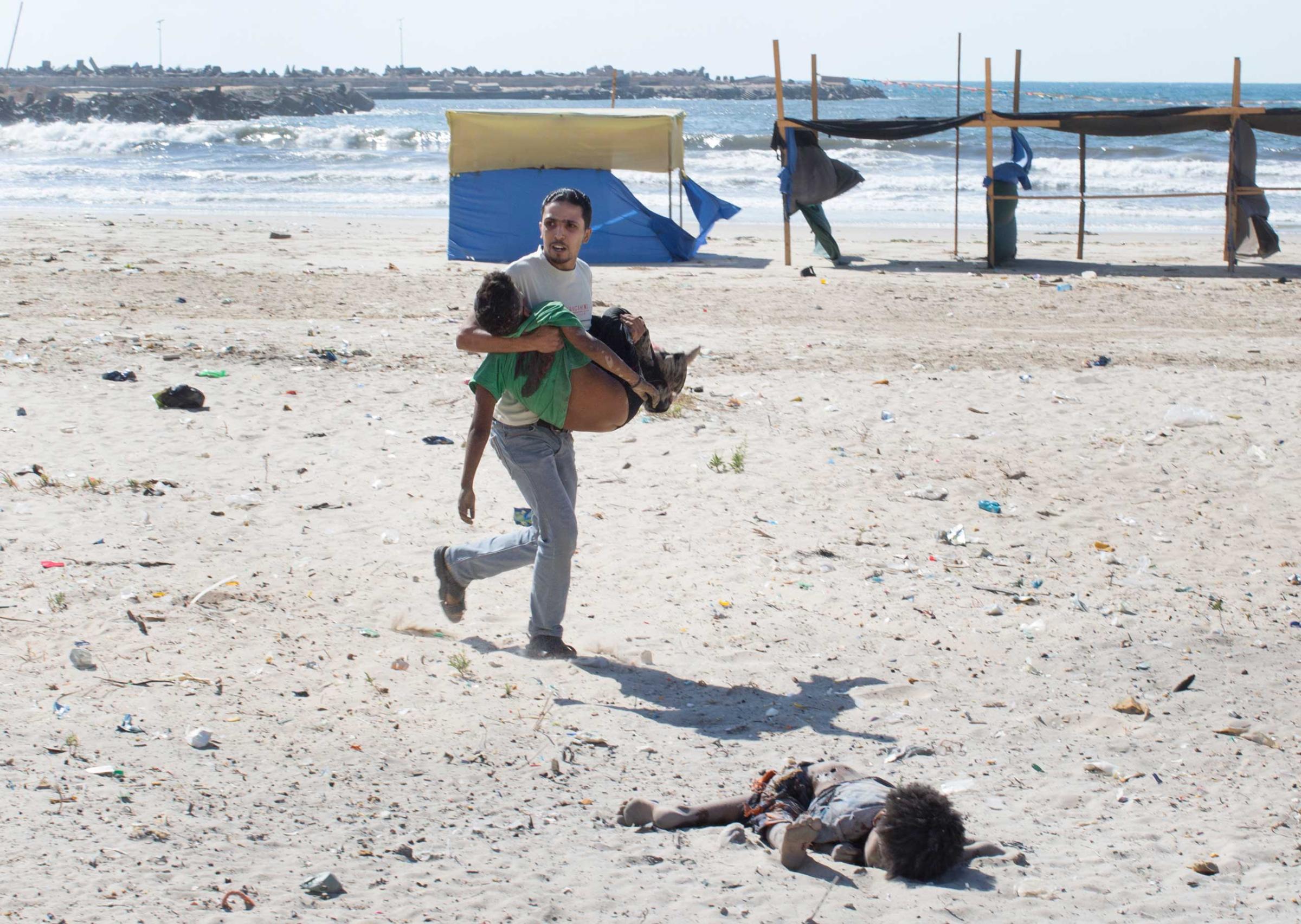A recent slew of situations resulting in catastrophic violence and death, including the Israel-Gaza war, the armed expansion of the Islamic State, the downing of a Malaysian Airlines plane in the Ukraine, the ongoing conflict in Syria, and also the spread of the Ebola virus, has led to a renewed debate as to what kinds of imagery media outlets should be expected to show.

One argument is that editors working for mainstream outlets, and perhaps even photographers as well, are unethically withholding from readers certain horrific imagery of contemporary conflicts and disasters because of a fear of offending or shocking, or even from a fear that readers will abandon the publication altogether. In his new book, War Porn, photographer Christoph Bangert asks: “How can we refuse to acknowledge a mere representation—a picture—of a horrific event, while other people are forced to live through the horrific event itself?”
Kenneth Jarecke, author of an excruciating photograph of a horribly burned Iraqi soldier during the first Persian Gulf War that went largely unpublished, posed a similar question in American Photo magazine in 1991: “If we’re big enough to fight a war, we should be big enough to look at it.”
There is, concurrently, a fear by others that readers are seeing too many such images and, as a result, are losing their ability to empathize and evaluate what is going on in the avalanche of violence and destruction depicted. Some editors also assert that, as family publications, the added risk of traumatizing children argues against the publication of the most egregious imagery.
Professionals may be at risk as well. A recent, first-ever study concentrates on 116 journalists working in three international newsrooms who are repeatedly exposed to images of graphic violence via social media, much of it “deemed too shocking to be shown to audiences.” The study, led by Anthony Feinstein, MD, of the Sunnybrook Health Sciences Center in Toronto, concludes, as summarized by the Dart Center for Journalism and Trauma, “that frequent, repetitive viewing of violent news-related video and other media raises news professionals’ vulnerability to a range of psychological injury, including anxiety, depression and post-traumatic stress disorder.”
A debate over what to publish is, of course, somewhat anachronistic given the propensity of social media sites to publish nearly anything and everything, but relevant nonetheless, given that many professional photographers and picture editors continue to support an effort to witness and represent world events in a reasoned way. As the Guardian’s head of photography, Roger Tooth, recently wrote, “But, in the end, what right do I have as a picture editor to censor what people can see? It’s all out there on the internet or on your timeline. All I can do is try to help keep the Guardian’s coverage as humane and decent as possible.”

As for myself, I have also been torn by a different set of questions: Why shouldn’t we be able to view, in the supermarkets themselves, photographs and videos that depict the conditions in which chickens and cows are held—before we purchase their eggs, milk, and meat? And when we buy sweatshirts and sneakers shouldn’t there be photo essays available that explore the conditions in which these products are made, and by whom, so that we can make informed choices based in part upon the well-being of the workers in the factories? Or when we fill a prescription at the pharmacy, shouldn’t the lab monkeys and rats who suffered, often egregiously, to aid in the creation of these life-saving drugs be somehow pictured, at least as a mark of respect?
Why focus then on the imagery of war, but circumvent so much of the enormous day-to-day suffering among both humans and animals? Why, for example, is there no similar clamor to be confronted with the images of civilians and soldiers who, years later, must contend with their own chronic injuries that resulted from previous conflicts? Or why don’t we demand to see the faces of those politicians who sent the soldiers to war, and not only the victims of their policies?
I suspect that part of the answer as to why we have such a fascination with viewing large-scale violence is its contested, apocalyptic nature, as if a struggle for good against evil might be being played out before the camera, with elements of heroism, bravery, betrayal, and cowardice, and with winners and losers. Certainly war, with its arresting imagery of bombs exploding, landscapes transformed, and soldiers and civilians facing cataclysmic injury and sudden death, can be highly visible and, as a result, vividly photographable. War can be made to appear as a variegated spectacle, whereas a chicken placed in a cage so that is has no room to turn lacks the potential for incandescent visuals or for redemptive glory (and we are the ones eating those chickens and their eggs). And, of course, viewing animals kept in such conditions could be devastating for the marketing of industrial farming; especially when it happens to other people, war may stimulate the economy.

But I suspect that there is another very powerful reason why photographers, in particular, might clamor for others to see the worst of what they have experienced in wartime. Despite serious misgivings about invading the privacy of others, photographers have often maintained that they feel it necessary to witness and represent the deaths, calamitous injuries and grief that they discover in conflict situations, and in many cases have been asked to do so by those who are its victims. Once those pictures are made, however, the implicit contract is that they be transmitted and seen by others, especially by those who may have even a small chance of preventing such tragedies from continuing or from multiplying. If these pictures remain unpublished there may be a guilty sense that a promise, a redemptive one, has not been kept. The trauma of witnessing such devastation, and the powerlessness that may accompany it, can be more difficult to resolve if one is prevented from sharing what one has seen with others—the reason the photographer was there in the first place.
As for the readers, though, it may not always be doing them a service to burden them with one’s own most visceral sense of horror, at least not on a continual basis. Whereas a grieving mother in Gaza deserves the whole world’s attention, so too do the families of those who died in the Malaysian Airlines crash, as do Yazidi survivors who endured the terror of the Islamic State fighters while hiding on a mountaintop. Should a large number of those victimized by violence be confronted by a reader looking at one wrenching image after another, without sufficient political recourse to ameliorate the great majority of what is depicted, the larger world may seem so senseless and repugnant that the reader tries to disconnect—hardly the result that an eyewitness would want.

Personally I find that I cannot look at every image of disaster that is published, and I try not to. A memory of those killed in the Malaysian Airlines crash is powerfully within me; I do not need photographs of covered bodies or children’s toys to make the loss of their lives more searingly awful. I do not need to see every funeral from Gaza to imagine the abject, enduring void left by their loss. Nor do I need a picture to explain what it is like for the Yazidi to hide from armed men who are bent upon their further destruction, considering them heretics—thinking about their anguished solitude gives me nightmares enough.
But whether I look at these photographs or not their existence remains important; they provide reference points for both the present and the longer view of history. Whatever pictures I see, I can imagine so many that I have not looked at and so many more agonizing moments of private torment that will never be witnessed. Whatever publications show, I know that the ramifications of the pictures are probably much, much more complex than could be contained in the fractional second depicted. This awareness is also fueled by social media—one knows that the descent into hell takes many steps, and an increasing number of them can be found only a click or two away from what mainstream media presents.
There is no calculus to determine the most effective way to show horror. But certainly it would be important to investigate the processes that engender it, and not just the shocking results, no matter how visual. It would be also helpful to begin to try and trace alternatives to such catastrophes, and to provide examples of even partial resolutions. Then show those who must endure the traumas of war once the spectacle has faded—the physically and psychologically wounded, orphans, widows, parents left without children—and remember them in the years to come. And, finally, begin contemplating the best of the “photography of peace,” and not only that of war—the beauties of ceasefires, and of healing, and of some of the horrors that were prevented from happening.
Fred Ritchin is a professor at NYU and co-director of the Photography & Human Rights program at the Tisch School of the Arts. His latest book, Bending the Frame: Photojournalism, Documentary, and the Citizen, was published by Aperture in 2013

More Must-Reads from TIME
- Cybersecurity Experts Are Sounding the Alarm on DOGE
- Meet the 2025 Women of the Year
- The Harsh Truth About Disability Inclusion
- Why Do More Young Adults Have Cancer?
- Colman Domingo Leads With Radical Love
- How to Get Better at Doing Things Alone
- Michelle Zauner Stares Down the Darkness
Contact us at letters@time.com